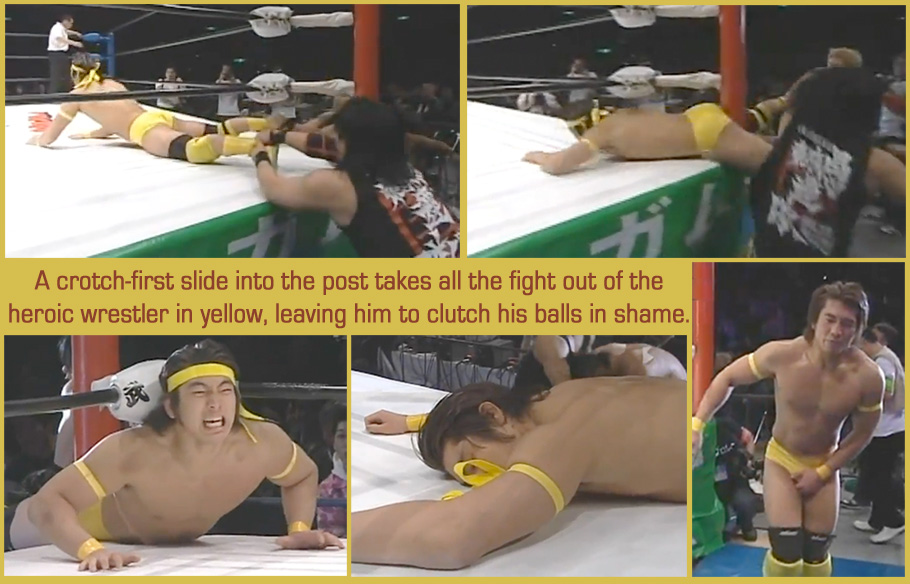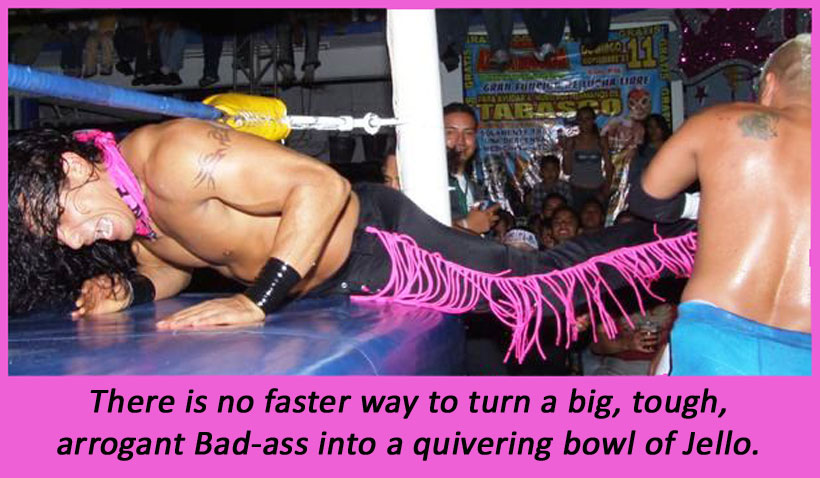
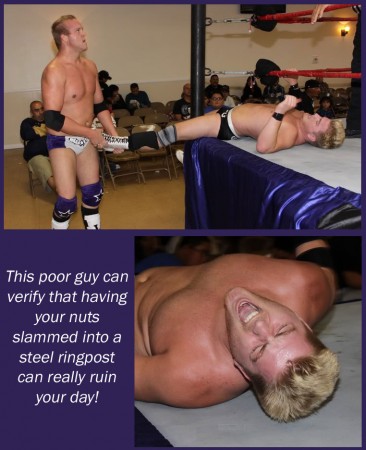 A popular (and sexual) move in pro wrestling is to drag the opponent’s groin into the corner post. The attacker positions his victim’s legs so they’re straddling the ring post. He builds suspense by holding the man’s ankles, threatening to pull his crotch into the steel post (which whips at least the males in the audience into a frenzy.)
A popular (and sexual) move in pro wrestling is to drag the opponent’s groin into the corner post. The attacker positions his victim’s legs so they’re straddling the ring post. He builds suspense by holding the man’s ankles, threatening to pull his crotch into the steel post (which whips at least the males in the audience into a frenzy.)
Suddenly he yanks the man’s legs toward him, thus driving the most vulnerable area — those ever-sensitive testicles — directly into the cold, hard steel. The victim will be destroyed for several minutes after, rolling around clutching his balls outrageously.
 Sometimes the victim is belly-up, so his face is on display to register and demonstrate the pure nut-crushing agony of this attack. Sometimes the victim is face-down, and after being crotched against the post, he appears to be caught mid-coitus, as if he is grinding or humping against the post like a dog in heat when it finds a warm leg to romance.
Sometimes the victim is belly-up, so his face is on display to register and demonstrate the pure nut-crushing agony of this attack. Sometimes the victim is face-down, and after being crotched against the post, he appears to be caught mid-coitus, as if he is grinding or humping against the post like a dog in heat when it finds a warm leg to romance.
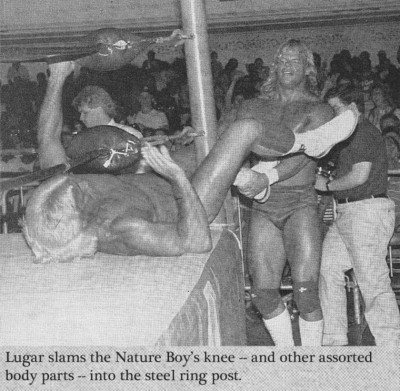 Clearly this move is all about emasculation. One wrestler destroys the other’s manhood and his sexual potency — crushing the very body parts that define the poor victim as a man.
Clearly this move is all about emasculation. One wrestler destroys the other’s manhood and his sexual potency — crushing the very body parts that define the poor victim as a man.
The victim is left neutered and writhing in pain, his ability to take action and to fight (his ability to have sex) stripped away. He is rendered (at least temporarily) a eunuch, a bitch, a helpless sissy. The attacker then gains the dominant position.
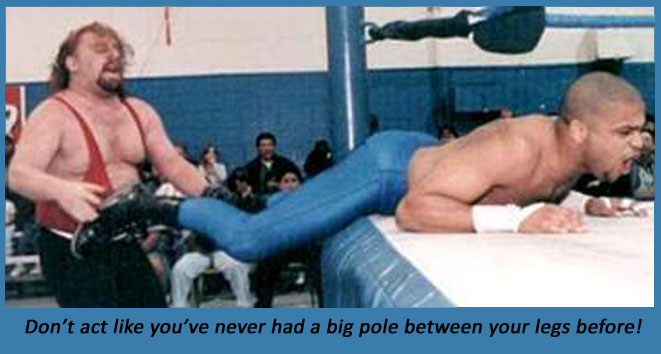
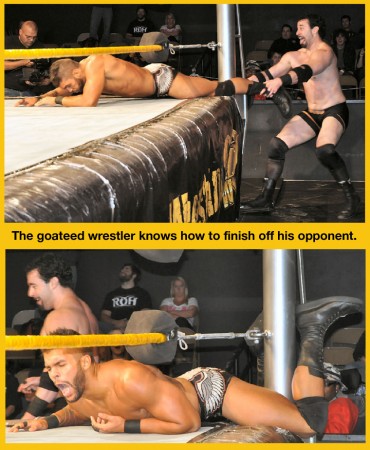 A pole or post is known to be a common phallic symbol — representative of the male organ. This is why, in springtime when love was in the air, young maidens would dance around the Maypole, decorating and worshiping it, encouraging procreation and celebrating fertility.
A pole or post is known to be a common phallic symbol — representative of the male organ. This is why, in springtime when love was in the air, young maidens would dance around the Maypole, decorating and worshiping it, encouraging procreation and celebrating fertility.
This is also why strippers dance on a pole when enticing their audience, wrapping their bodies around it, pressing against it. The visual reference, when a dude sees a body against a big stiff post, is to make like the post. So the image of a body against a post is meant to excite and arouse the male viewer.
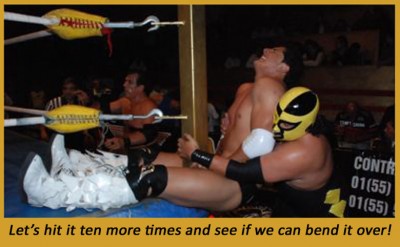 The suffering, limp victim is contrasted (in the mind of the viewer) with the infinitely hard, unbreakable post. His masculinity, his hardness, pales in comparison to the big, thick steel pole. The image of a rape is implied when the victim is seen with the huge post — like a giant’s cock — between his legs.
The suffering, limp victim is contrasted (in the mind of the viewer) with the infinitely hard, unbreakable post. His masculinity, his hardness, pales in comparison to the big, thick steel pole. The image of a rape is implied when the victim is seen with the huge post — like a giant’s cock — between his legs.
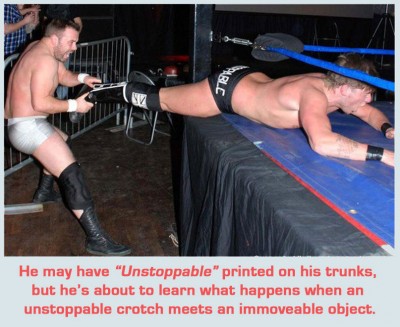 To take this metaphor a step further, one could compare all four posts that support the ring as symbolic of the male power structure that sanctions and demands violence and fighting in the ring. Even when the ring is empty, we see these four posts (representing men in general) thrust powerfully and unyielding into the air, forever hard and excited, waiting to see some more wrestling action between the posts.
To take this metaphor a step further, one could compare all four posts that support the ring as symbolic of the male power structure that sanctions and demands violence and fighting in the ring. Even when the ring is empty, we see these four posts (representing men in general) thrust powerfully and unyielding into the air, forever hard and excited, waiting to see some more wrestling action between the posts.
I think the ropes stretched between the posts symbolize the capturing or entrapment of the wrestlers in the ring, as if they’ve been forced to fight by the male power structure supporting the ring. The wrestlers are seen as bound captives when they get between the ropes, tied together, wrestling to appease and entertain the four corner posts — the dudes watching the match and paying them to wrestle. Or maybe it’s just coincidence that wrestling rings are surrounded by four big, hard steel posts and ropes…

